It might not be the first European country you think of, but Lithuania offers a unique holiday experience for any avid adventurer.
From exploring the beautiful countryside to tasting some of the locally crafted brews, this Balkan state has plenty of fun and exciting things to do.
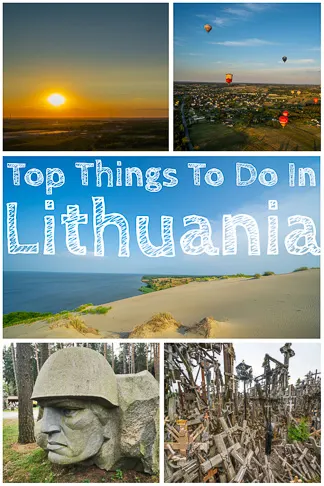
Most holidays start in Vilnius, Lithuania’s capital, but with so many great destinations on your doorstep, you would be wise to plan a broader travel itinerary.
To make it easier for you, I have highlighted 25 of the best things to do in Lithuania – accompanied by Lithuanian pictures from my adventures here.
Top Things To Do In Lithuania
1. Fly in a Hot Air Balloon Ride Over Vilnius
This is one of the best ways to view as much of Lithuania as possible. Once you’ve settled down and are familiar with your surroundings, this is the perfect choice for adventure seekers.
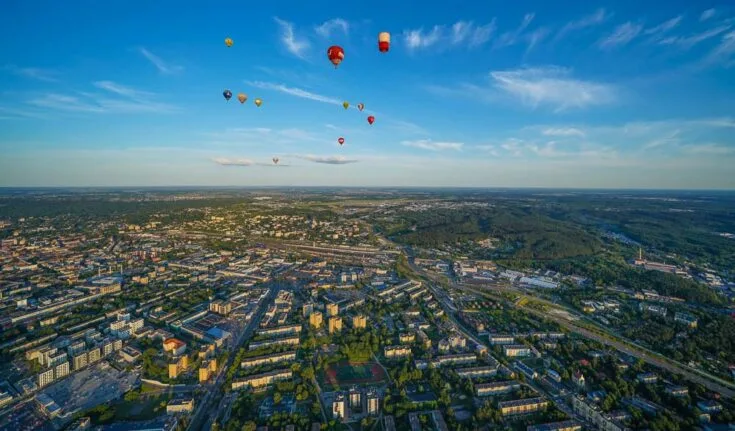
By taking a hot air balloon tour, you will be able to see all of Vilnius and the surrounding countryside without needing to walk a step.
As long as you go up on a clear day, you will have exceptional views many kilometers into the distance.
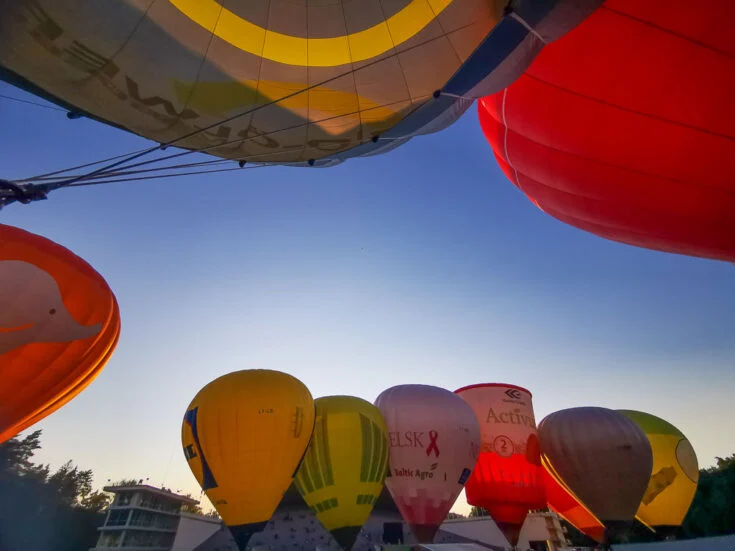
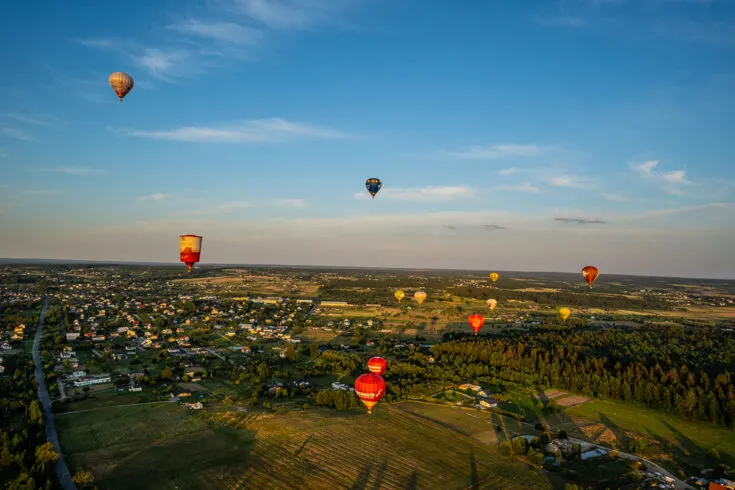
The trips can take anywhere from 1 to 3 hours, depending on which tour option you choose. The more time you spend up there, the more you will be able to see.
If you’re not afraid of heights, then you’ll have a great time getting a glimpse of Vilnius from a rare and unique standpoint.
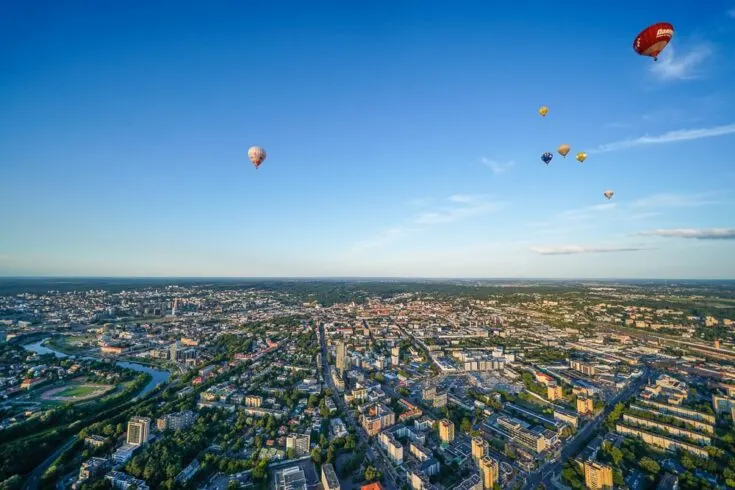
2. Plan a Pilgrimage to the Hill of Crosses
The Hill of Crosses is one of the major Lithuanian points of interest. This unique destination is covered in over 200,000 crosses and is a cultural center for both locals and tourists alike.
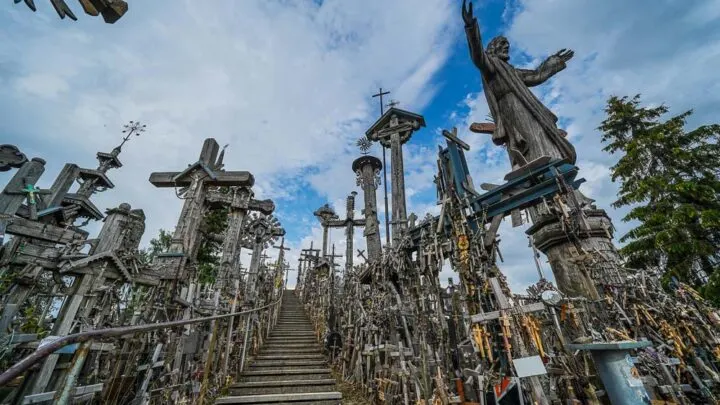
The first crosses were recorded here in 1831. Locals started erecting them as a way to commemorate loved ones who had died during the November Insurrection.
This war-filled time made it difficult to locate the bodies of people who had died, so people started using the Hill of Crosses as an impromptu graveyard.
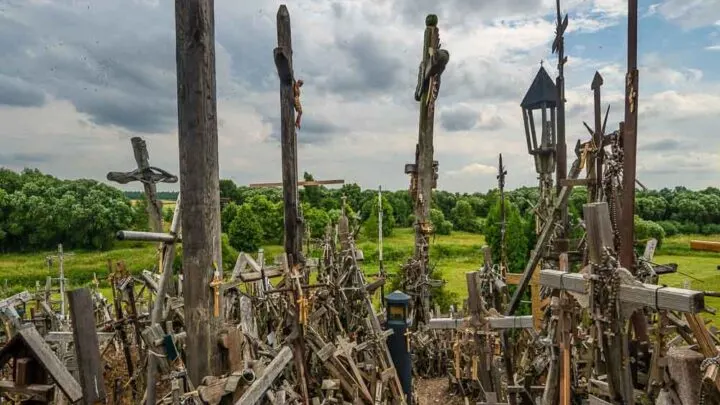
Since then, it grew into a significant part of Lithuanian culture and was used as a symbol for resistance, peace, and hope. Although the hill had been partially demolished over the years, people kept coming back to rebuild it.
In modern times, locals and foreigners alike continue to place crosses and other symbols of Christianity throughout the site.
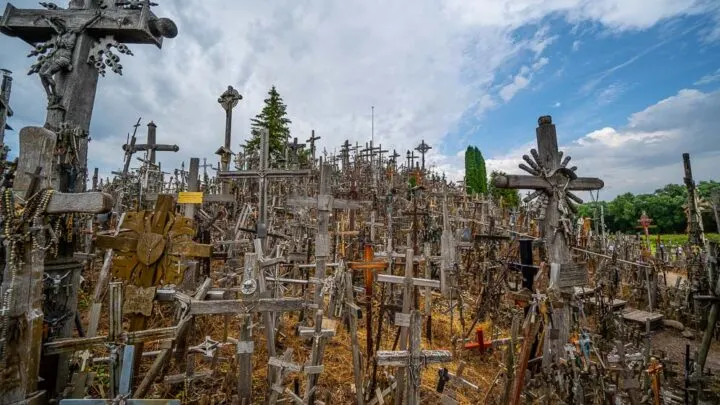
Whether you want to stay in one of the nearby cities or take a day trip from Vilnius, the Hill of Crosses is a must-see destination when visiting Lithuania.
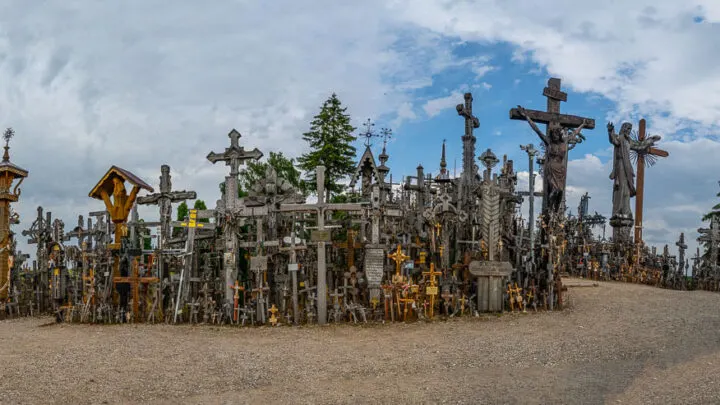
3. Canoe in the Vilnele River
Another activity for the adventurous is a guided canoe trip on the Vilnele River (also known as the Vilnia).
It is one of the two main rivers that flow through the city of Vilnius and a great opportunity to explore the city and get a bit wet on a warmer day.
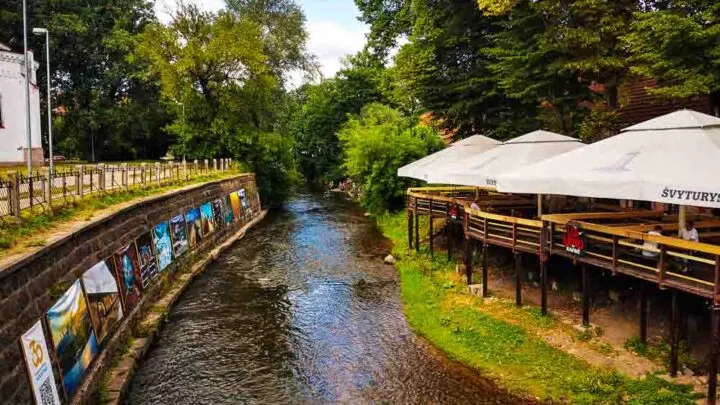
This activity is best enjoyed during the summer or early fall months when the weather is still pleasant. You’ll be taken out by your local expert, who will guide you on this 2-hour experience.
There are easy parts with flat water and then some white water sections offering more excitement.
It is considered the most challenging route in Lithuania, but don’t let that scare you off – this is not a country that is known for difficult river canoeing.
4. Visit the Curonian Spit Beaches
When you think of Lithuania, golden sandy beaches might not spring to mind – but they should.
The Curonian Spit is the most unique geographical attraction in the country.
It is an almost 100 km stretch of dunes that cuts through the Baltic Sea from Lithuania to Kaliningrad, Russia.
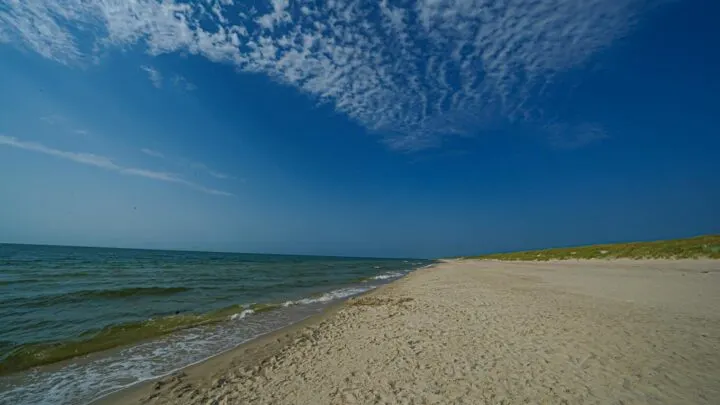
Here you will find many exciting natural activities, as well as plenty of tourists during the summer months.
Even though this is a popular destination, you will not have to worry about finding a nice quiet beach to relax on.
If one of the spots is too full, you can just walk a little bit further to the next one.
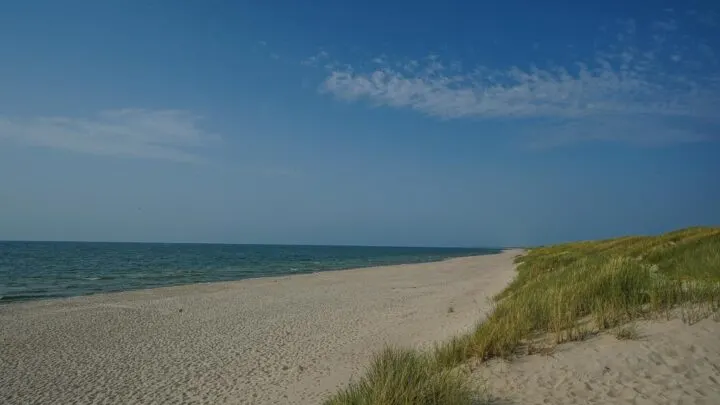
If you want to head out onto the water, you’ll have plenty of opportunities to swim, take boat rides, or walk around looking for amber gemstones that may have washed up.
While lounging on the beaches all day is good enough for most people, you can find some other fun Lithuania things to do on our list in the same area.
Tip: If you don’t feel like exploring the spit on your own, you can always choose a full-day guided tour.
5. Hike Up Parnidis Dune
While visiting the Curonian Spit, the Pardanis Dune should definitely be on your list of top things to see in Lithuania. This is the most popular destination in the spit, so a must-see site on its own.
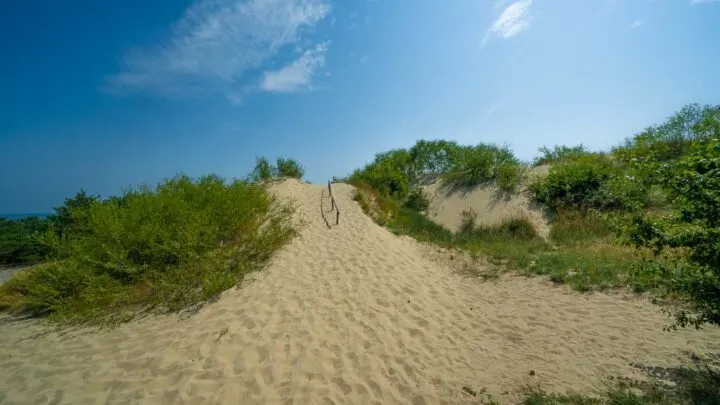
This isn’t your average dune, standing at a height of 52 meters. There is a path that will take you all the way to the top, and once you are here, you will be spoiled with some of the best views in the area.
You will also find a massive sundial structure that has been built on a stone pillar.
The sundial is almost 14 meters tall and weighs over 36 tonnes.
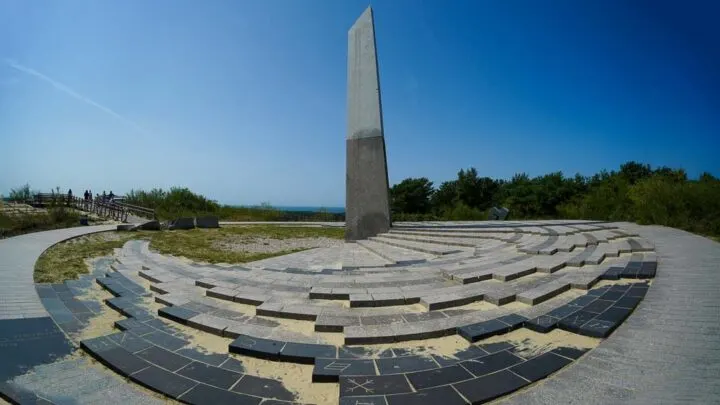
The Pardanis Dune is a wandering dune which means that it moves a few centimetres each year.
Although that might not seem like much, this dune has passed through the nearby town of Nida a few times over the centuries.
6. Taste Lithuanian Craft Beer
While exploring Lithuania, you should definitely sample some of the local craft beer.
When most people think of beer, they think of European countries like Germany, Belgium, and England. However, Lithuania is not one to be forgotten.
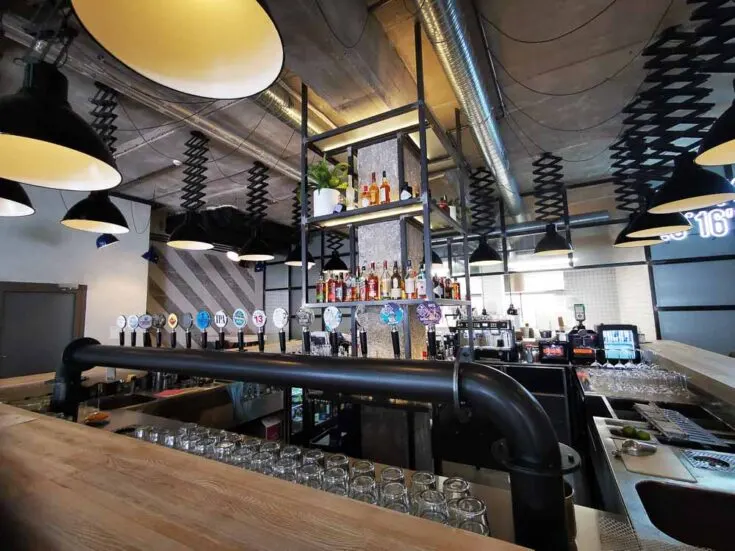
There is an ancient culture of beer making that stems back to the 11th century. Originally taught by German beer experts, Lithuanians then took on a style of their own.
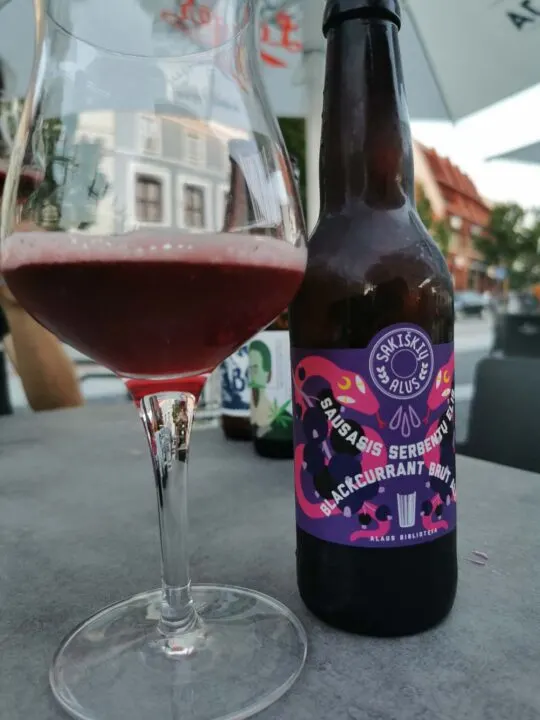
The result is some of the most unique craft beers you’ll ever taste. Beer types like kaimiskas (traditional farm-style ale), landbier, and Kvass are only some of the styles you will be able to try.
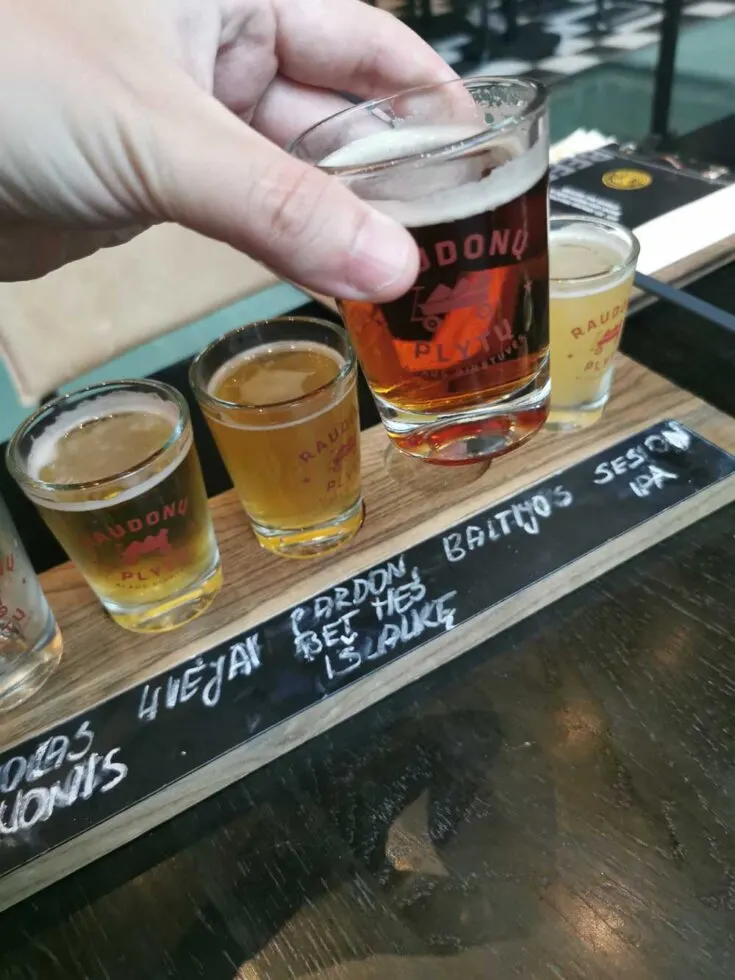
The best place to sample a wide collection of Lithuanian craft beer is in Vilnius, at one of the many beer houses.
However, if you are particularly keen to explore Lithuanian beer culture, you can head to the northern regions.
Here you will find many large breweries as well as traditional farmhouse brews.
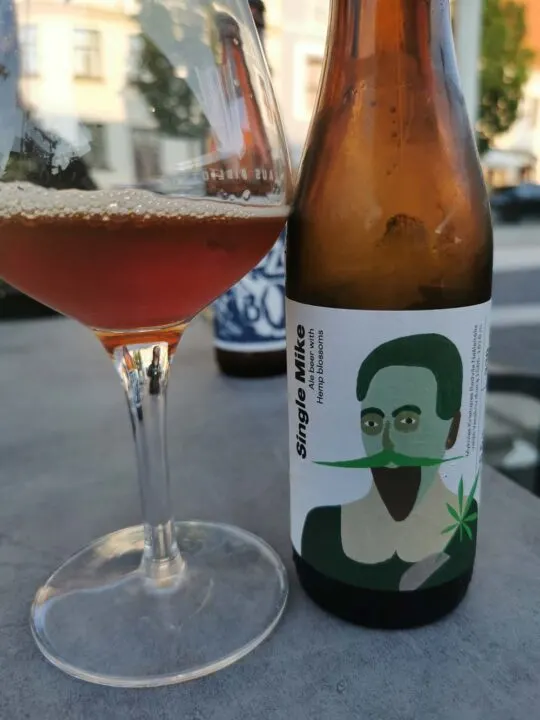
7. Stroll Through Grutas Park
Grutas Park is one of the most unique Lithuanian destinations to learn about Soviet control over Lithuania.
It is a park/museum that was founded by a wealthy businessman in 2001. Almost all Soviet Artifacts that were located in Lithuania during the Soviet area is now located in Grutas Park.
It’s a great place to explore by yourself or on a guided tour.
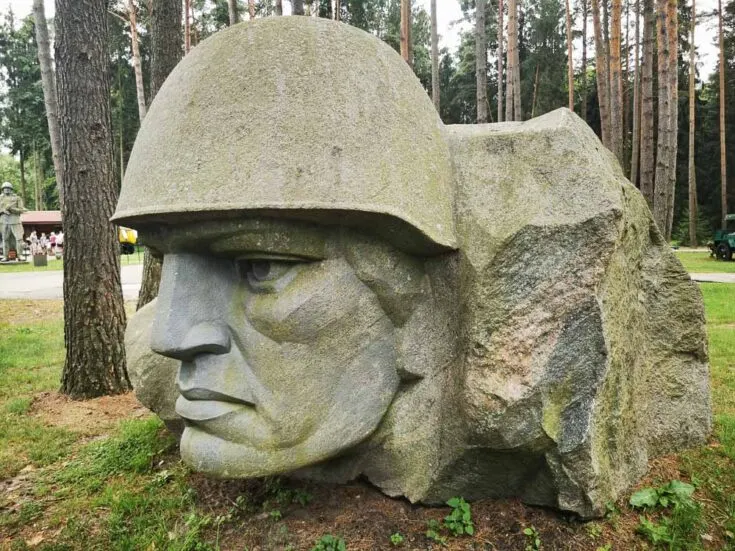
As a part of Soviet rule, many statues commemorating Soviet leaders were erected throughout the country.
However, Lithuania largely resisted Russian influence, and as soon as their independence was gained (in 1991), the statues were removed from public places.
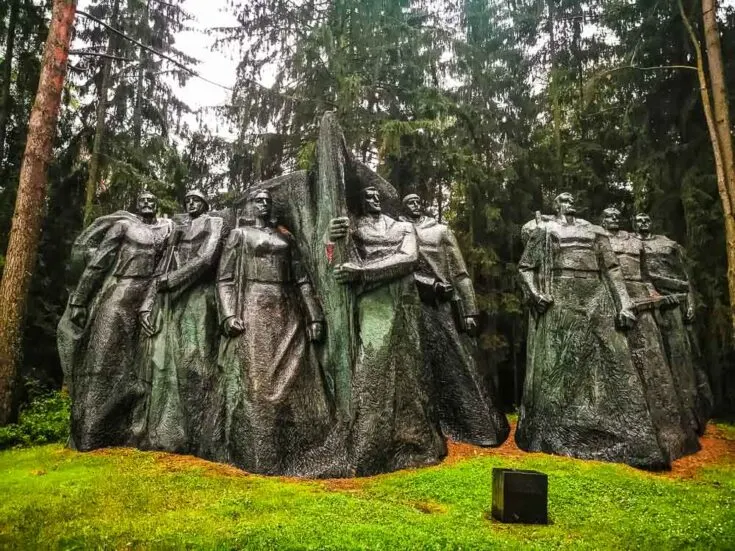
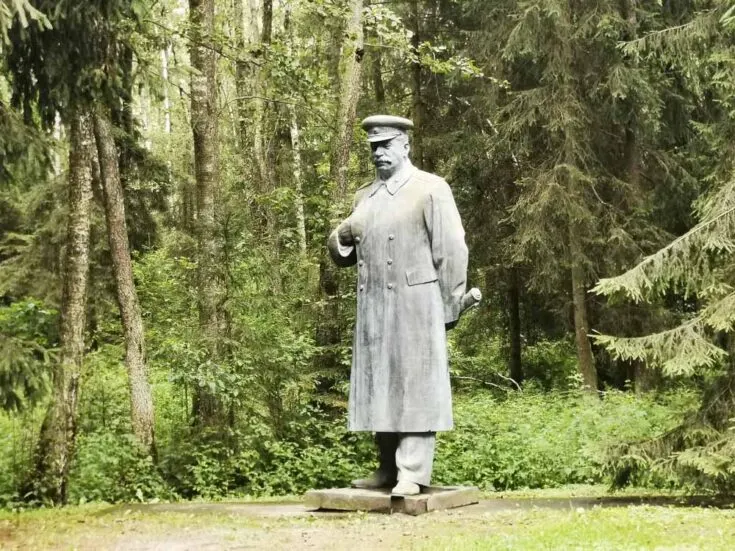
At first, the statues were scattered, but they were then collected and placed in this privately-funded museum.
Today you can stroll through the gardens and take in over 80 statues from 46 different sculptors which once was located all over Lithuania during the Soviet area.
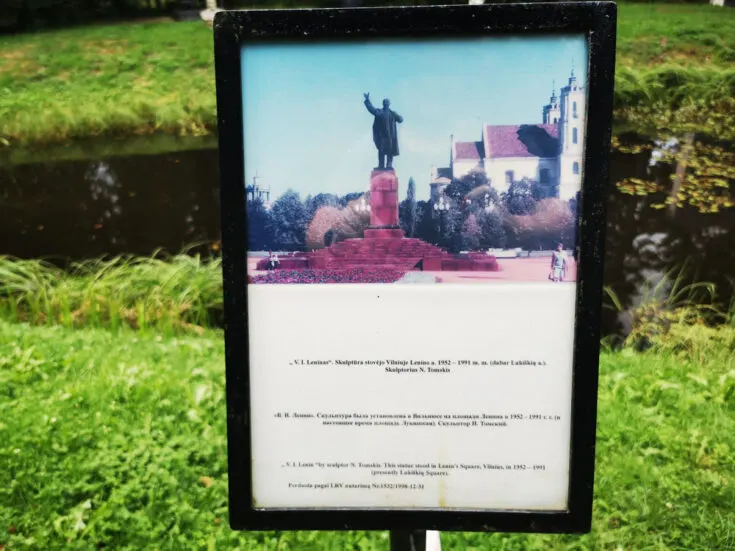
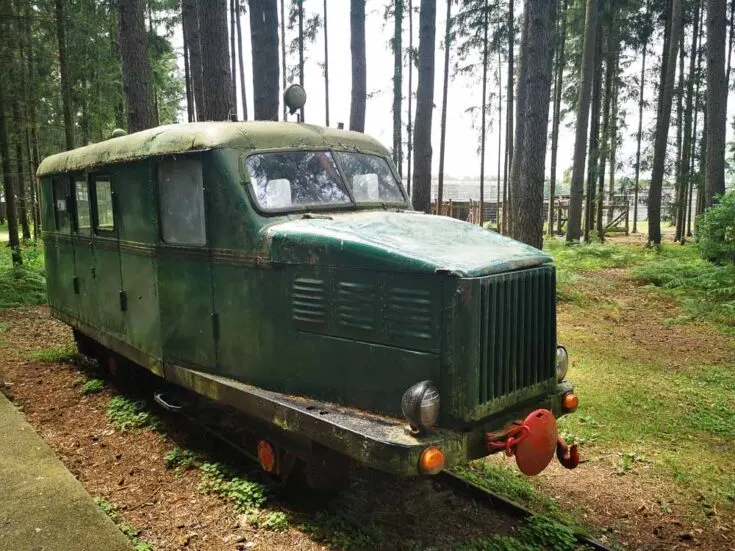
Apart from the statues, you can enjoy traditional Lithuanian pine forests, playgrounds, mini-zoos, and cafes – all of which contain Soviet-era relics.
If you’re someone who has a passion for both nature and history, then this unique tourist attraction is worth a visit.
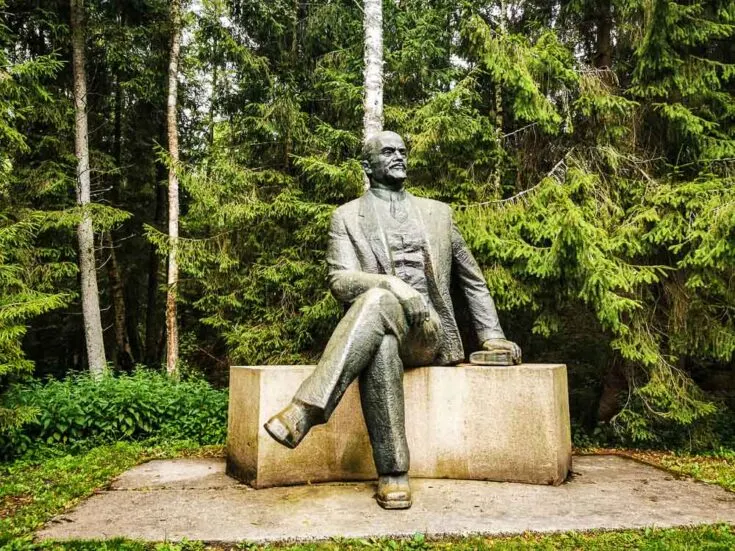
8. Explore Trakai Castle
When you’re staying in Vilnius or one of the surrounding towns, Trakai Castle is a great option to explore.
This ancient site has been at the forefront of local history for hundreds of years.
Originally the residence of the Grand Duke of Lithuania, the castle served as the main point of defense for Vilnius until it fell into disarray in the 17th century.
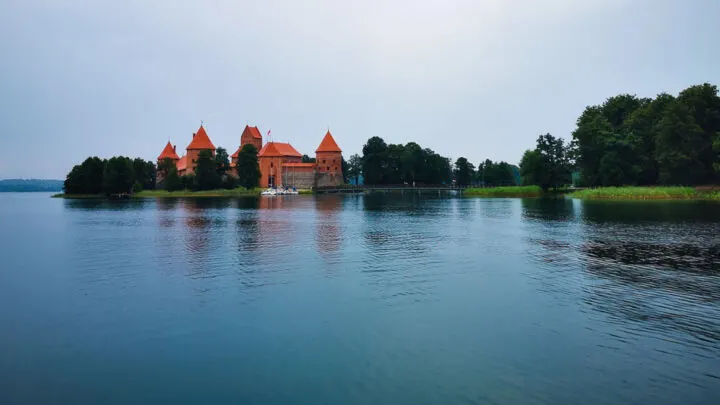
Today it stands as a museum and a place to explore what life was like during these medieval times.
The castle grounds are filled with decorations dating back to the Grand Duke’s occupation, archaeological findings, and artworks.
You can either explore the grounds by yourself or using one of the many guided tours that are available.
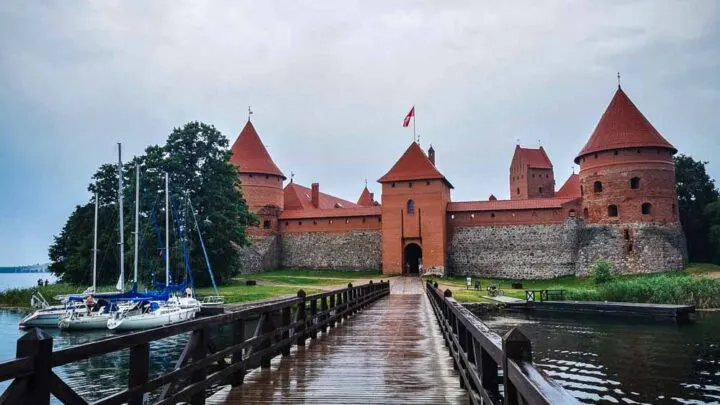
The museum isn’t the only way to experience the castle. In summer, the large grounds burst into life with both music festivals and converts hosted here.
9. Visit the Palace of the Grand Duke of Lithuania
Another piece of ancient architecture that should be on your list of what to see in Lithuania is the Palace of the Grand Duke of Lithuania.
The palace is part of the Vilnius Castle Grounds, along with the remains of Vilnius Castle and Gediminas’ Tower. Together they form a magnificent attraction for any history lovers visiting the city.
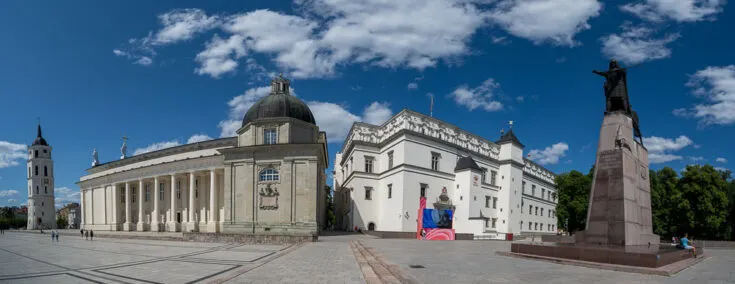
The current palace is a reconstruction, with the original building having been demolished in 1801.
It was completed in a renaissance style to match the last remodeling that took place in the 16th century (as well as the nearby Vilnius Cathedral).
Archaeological evidence suggests the site had been used for a long time before the palace was erected.
The buildings were remodeled and improved throughout the height of the Grand Duchy of Lithuania and reached their height during the reign of Sigismund II.
Walkthrough the grounds and the palace itself while you take in the magnificent architecture and glimpse back into the opulent lives of the Lithuanian royalty.
10. Step Back in Time at Dino Park
Families and dinosaur lovers alike should make sure to head to the city of Radailiai to visit the famous Dino Park. While most of the activities on this list might be better suited to adults, this is great for the whole family.
The amusement park is filled with over 50 different animated moving and roaring dinosaurs – but don’t worry, they won’t bite.
These lifelike prehistoric giants will give you the perfect opportunity to get up close and personal.
Apart from the dinosaurs, you can also try some of their other forms of entertainment – like a 5D cinema, electric cars, and a mirror labyrinth.
There are places to eat and snack while exploring the grounds, so you can take your happy time.
11. Take Photos in the Radailiai Upside Down House
Located just 13 km outside of Klaipeda, inside the Radailiai Dino Park, you will find the Upside Down House.
This is a popular day trip for tourists and locals who are staying in the area and is a great place to visit with kids while exploring Dino Park.
The Radailiai Upside Down House is exactly as the name suggests – an upside-down house.
This type of attraction has become very popular worldwide and is a unique experience where you will get plenty of selfie-worthy moments.
Stroll around a house where all the household appliances will be hanging from the rooftop – don’t worry, they won’t fall on you. It’s a truly bizarre place that acts as a life-size art exhibit.
If weird and wonderful things interest you, then get your tickets and start snapping photos.
12. Experience Magic at the Vilnius Museum of Illusions
Few places offer the same level of mystery and satisfaction as the Vilnius Museum of Illusions.
Most of the museums that you find in Vilnius or throughout Lithuania are focused on local history or culture – but not this one.
Here you will be able to entertain your inner child and be mindblown by various optical illusions and unique exhibitions.
It’s a great place to bring the family, and any children under 7 years old can accompany an adult for free (max 3 kids per adult).
The price is reasonable at $13 per adult and $10 for students/seniors.
If you need some help navigating through the museum or understanding some of the exhibits, you can just ask one of the helpful staff for help.
The Vilnius Museum of Illusions is the perfect spot for a more unconventional Lithuanian experience.
13. Stop at Klaipeda Old Town
Klaipeda, Lithuania, is a unique town with German-influenced architecture found en route to the Curonian Spit.
If you are planning a trip to the famous Baltic beaches, this is a great stop on the way with plenty of comfortable accommodation options available (like the Amberton Hotel).
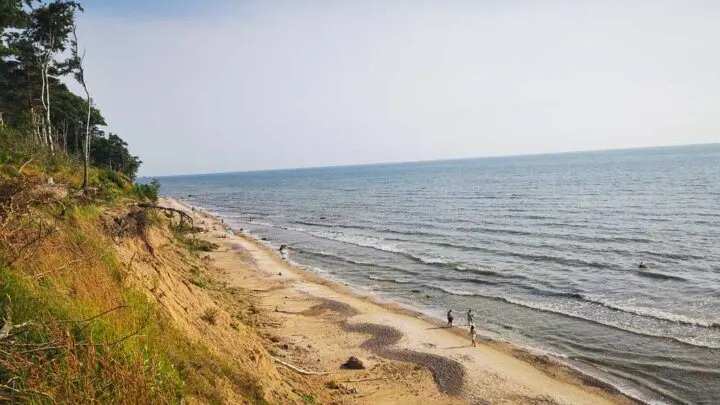
The town itself is small but rarely gets overcrowded. Take your time walking through the cobblestone streets as you observe a type of architecture not found anywhere else in Lithuania.
This is due to Germany’s control of the area during WWII.
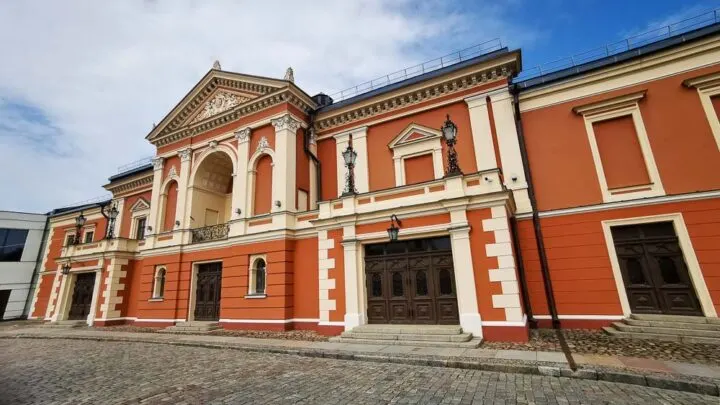
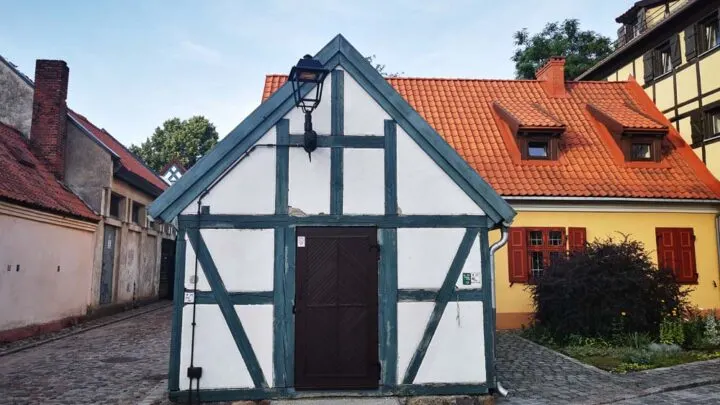
While exploring the town, make sure to check out two of the most popular spots – Turgaus Gatve and Theatre Square. The latter is where Hitler is said to have announced the town’s annexation.
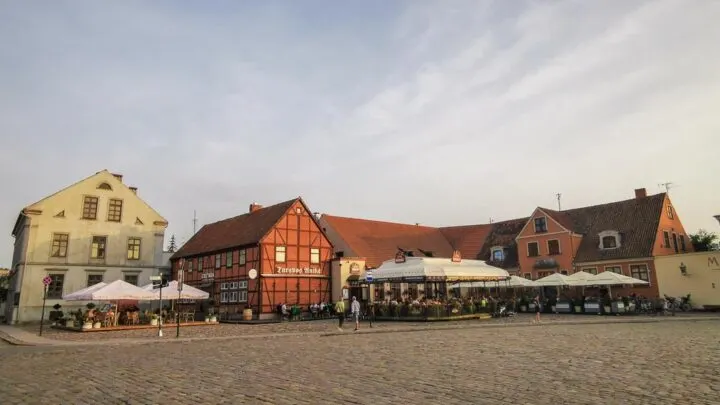
Friedricho Pasazas is another great place to visit during summer. Here you can spend the afternoons in an open-air courtyard listening to live music performances while eating local cuisine amongst both locals and tourists alike.
14. Kaunas, Lithuania
Kaunas is the second-largest city in Lithuania and was the first city in eastern Europe to be declared a UNESCO City of Design.
This is thanks to the European Art Deco style of architecture that was adopted after World War I.
When the city went through this period of modernization, the culture surrounding it also adapted.
There is a cafe culture in the city, where you will find plenty of coffee shops with tables spewing out into the surrounding streets.
It’s a lovely place to walk around and just take in the local atmosphere.
When you’re not getting lost in exploration, you can also check out some of the many popular Lithuanian attractions found throughout the city.
Some of the most noteworthy include the Ninth Fort, Pazaislis Monastery, Kaunas Castle, and the Devil’s Museum.
15. Pažaislis Monastery
The Pažaislis Monastery is one of the most magnificent churches in the country. Situated on a peninsula extending into the Kaunas reservoir, this destination is a prime example of Baroque architecture.
The grounds are massive, and walking up to the large charge is an experience on its own.
Once you walk inside, you will be greeted with marble decorations and ceilings painted with frescos dating back to the 17th century.
One of the things that are so impressive about this church is that its artwork and marble decorations have survived countless wars, changes in ownership, and theft.
This is now a popular tourist destination, managed by a convent.
If you visit between the summer months of June and September, you also be able to attend the Pažaislis Music Festival.
Three months of concerts are held on the grounds – but not inside the actual church. It has been a tradition since the 1960s and still remains a popular event that attracts thousands of visitors.
16. Visit the Devil’s Museum
Don’t let the name scare you. The Devil’s Museum is one of the stranger things to do in Lithuania and perfect for those who love eerie artwork.
The museum itself is not at all creepy; it’s just the type of artwork that is on display that might make you squirm.
You can find interesting pieces depicting devils, wizards, witches, and plenty of other mythological monsters.
Although the content might not be of interest to you, the artwork itself is very well done and worth a look.
The museum was opened after the founder of the collection’s death in 1966. At the start, there were 260 pieces on display.
However, after the public caught wind of this creative collection, more and more people started donating their own pieces.
By the mid-80s, a three-story extension had to be built to house all of the pieces. And, by 2009, there were over 3,000 items on display. There are more than enough artworks for you to spend a few hours wandering around the house.
17. Church of St. Anne, Vilnius
As far as churches go, Vilnius is definitely the number 1 destination in Lithuania. With a total of 28 churches (1 church per 700 inhabitants), you’ll need to spend more than one day exploring the city to see them all.
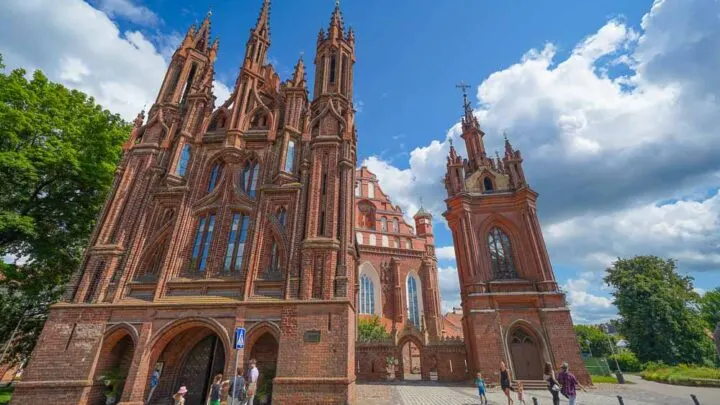
If you are limited on time, the Church of St. Anne is one of the main ones worth visiting.
It is only a 10-minute walk from Vilnius Cathedral and offers a gorgeous Gothic design with characteristic red walls, two towers, and a nave.
The original church was built from wood in the 15th century, but it was only during its rebuild in the 16th century when it became a prominent feature of the city.
33 different types of clay brick were used in its construction, which were then painted red.
Inside you will find beautiful Baroque-style decorations along with an impressive altar.
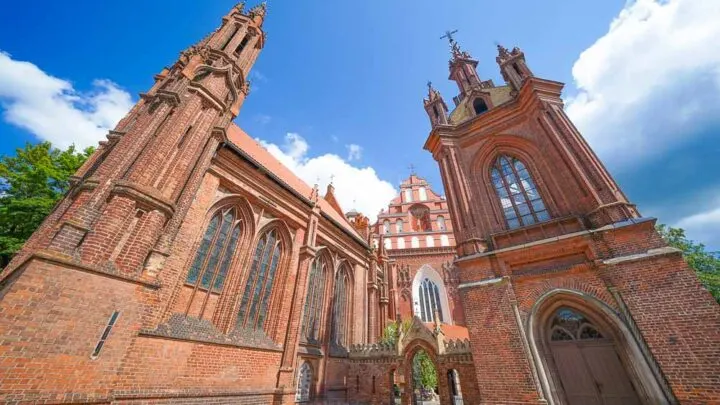
Although it is not the main Roman Catholic Church (those honors go to Vilnius Cathedral) since 2018, it has been used to celebrate Mass according to the traditional Roman rite.
Once you’re finished exploring the church, you can climb up the neo-Gothic bell tower next door, which was constructed much later in the 1870s.
18. Go Underground at Plokstine Missile Base
Have you ever wondered what an underground missile silo looks like? Well, then Lithuania has the perfect museum for you.
For a small fee, you can head straight into the first Soviet Union nuclear missile base.
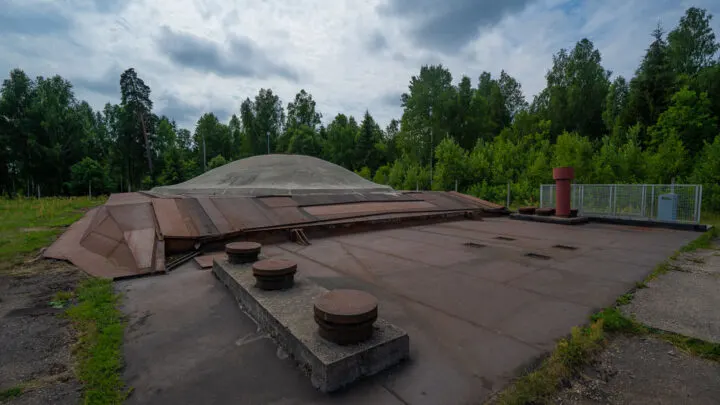
Although most of you might never have heard of the Plokstine Missile Base, it is where the Cuban missile crisis nuclear warheads came from.
They were transported from here to Sevastopol, where they were then loaded on a ship headed to Havana, Cuba.
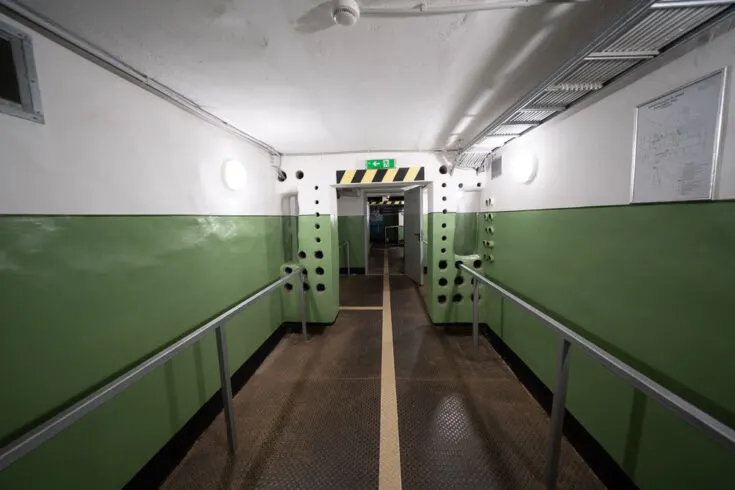
The silo is located in the Plokstine forest in northwest Lithuania. The site was chosen because of its remoteness, which does make it slightly more effort to visit – but still an important historical destination.
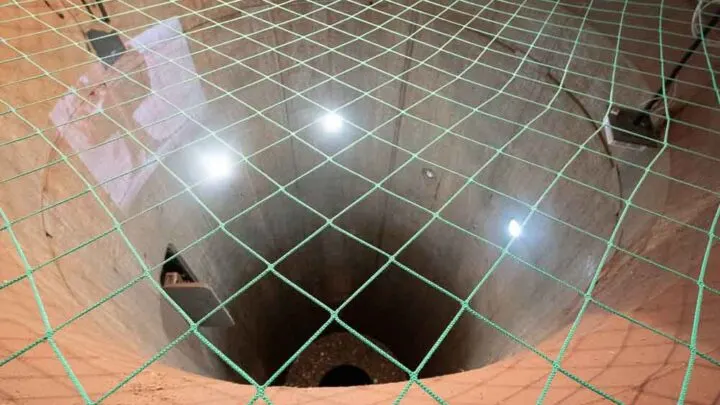
Plokstine Missile Base was decommissioned in 1978 and remained abandoned for many years, where it suffered from metal theft.
Luckily, in 2012 the cold war museum was opened here, allowing the history of that era to be preserved.
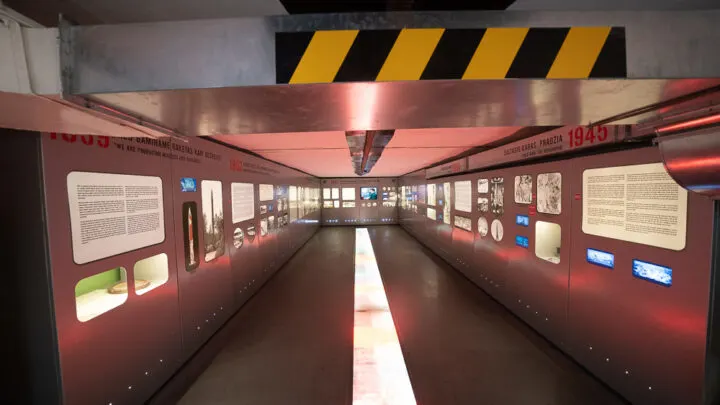
19. Visit the Self-Proclaimed Republic of Uzupis
Did you know there is a self-declared republic inside Vilnius? The Uzupis Republic declared its independence on the 1st of April 1997 and is an art-focused town that is definitely worth the visit.
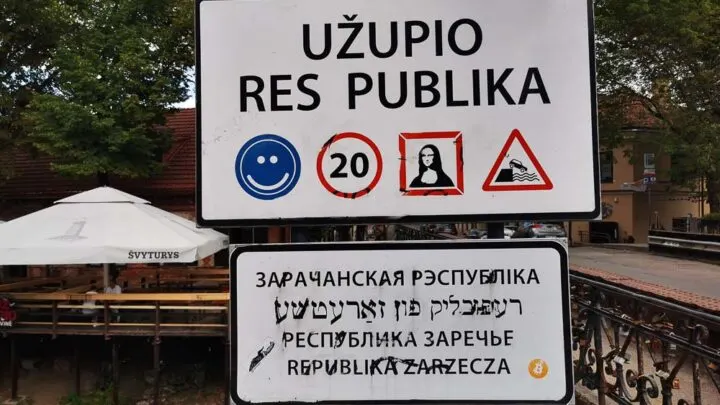
Artists have favored this part of Vilnius for a long time, and as a result, the neighborhood has transformed into an art-focused bohemian destination.
Although it’s small (only 0.6 square km), you can easily fill up a day exploring all of the local hotspots.
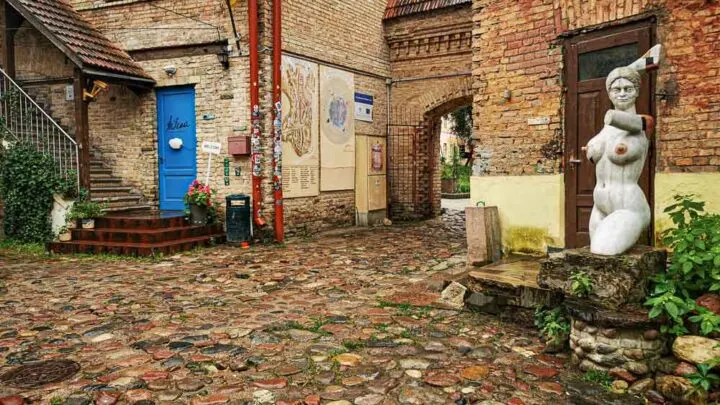
Whether you’re walking along the Vilnele River, spotting the legendary local mermaid or visiting the art incubator to see all the amazing creations, Uzupis is a great holiday destination.
Of all the sculptures you’ll see in the republic, make sure to spot the bronze archangel Gabriel in the town square.
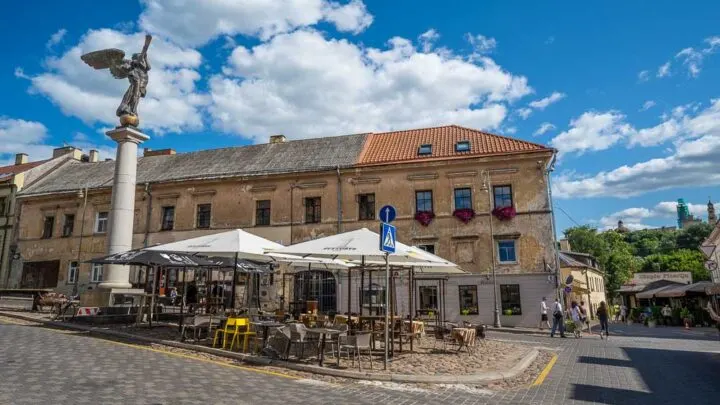
20. Pay Respects at Vilnius Cathedral
When you’re exploring the old town of Vilnius, the main cathedral is a worthwhile stop. Although it isn’t the only church in the city, it’s by far the biggest and most beautiful.
It’s also very close to the Vilnius Castle Grounds, which makes it great to include on a day tour.
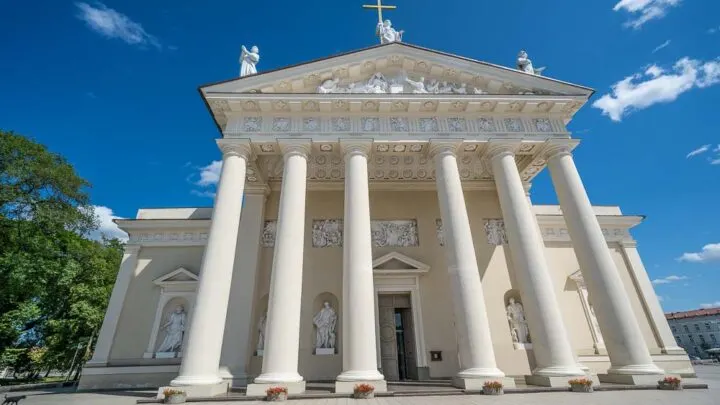
The magnificent white walls and detailed interior are the main attractions, but you can also walk up the Vilnius Bell Tower to get some incredible panoramic views of the surrounding areas.
The entrance to the tower is just outside the main entrance.
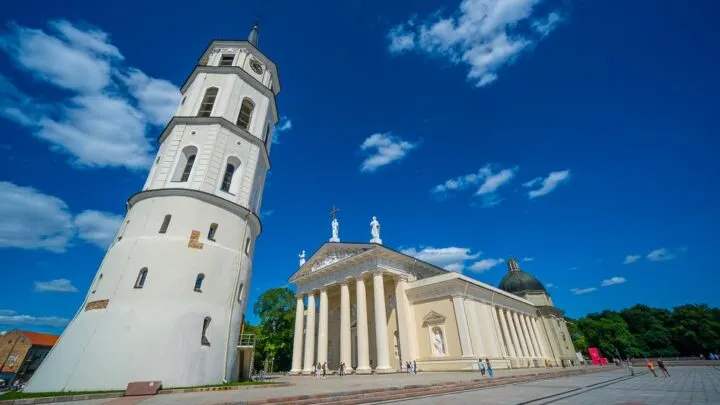
Vilnius Cathedral has had a long history since its inception in the 13th century.
Originally a Gothic-style church, it was rebuilt towards the end of the 1700s in its current Neoclassical style. It’s a great destination to appreciate the struggles Vilnius has faced and overcome over the centuries.
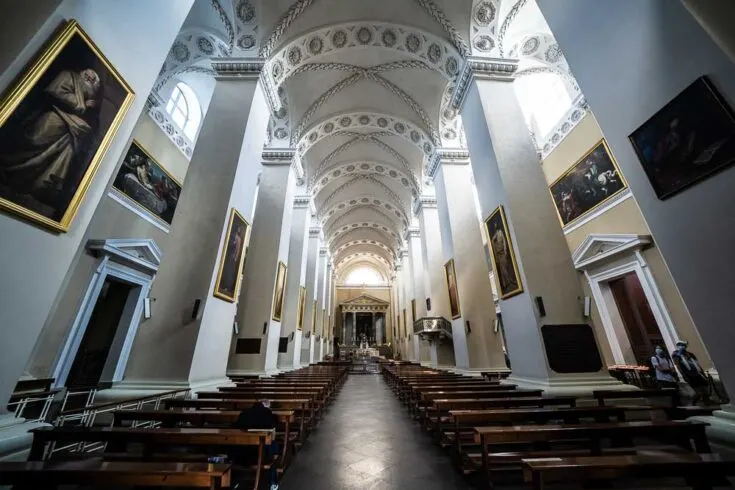
21. Go Skiing in Lithuania
This northern European country might not be as famous for skiing as France or Switzerland, but it still offers many wonderful opportunities.
Not only can you ski here in winter, but there is also a state-of-the-art indoor venue available all year round.
The Snow Arena is a popular destination in the south of Lithuania, just outside Druskininkai. It’s a 2-hour drive from the capital and is a very relaxing area known for its spas and tranquility.
Although most tourists prefer to visit Lithuania during summer, if you are here during the colder months, you will have access to many more skiing locations.
When in Vilnius, you can travel just outside the city to the Liepkalnis entertainment area.
Here you will find snowboarding and skiing in the winter or mountain biking, climbing, tubing, or tobogganing in summer.
22. Relax in Druskininkai
What is a holiday without a bit of relaxation? If you need a break from the hustle and bustle of the major cities, head over to Druskininkai in the southern part of Lithuania.
It is located just over a 2-hours drive away from Vilnius and has been a popular spa destination since the 19th century.
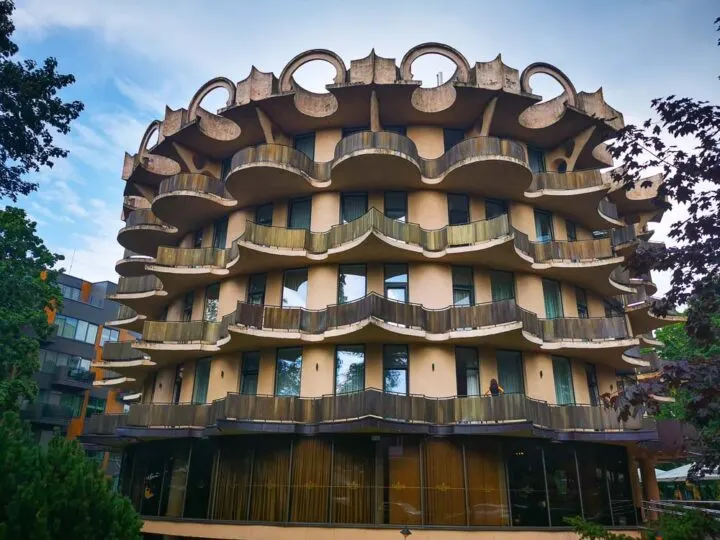
Like much of Lithuania, the history of Druskininkai has been fraught with warfare and enemy occupation. Despite all the hardships, the town maintained its focus on relaxation and spa life.
It started growing into the popular spa town that it is today after WWI and has continued to be a major destination for people from Lithuania as well as neighboring Poland, Belarus, and Russia.
There are plenty of exciting events and attractions to visit in the town.
If you aren’t relaxing in a spa, you can visit the first water park opened in Lithuania, the Grutas Park Soviet Memorial, or go skiing at the indoor Snow Arena.
The annual Druskininkai Poetic Fall and International Art Festival are also great ways to experience the local culture.
23. Visit the Lithuanian National Opera & Ballet Theatre
Lithuania’s history of ballet and opera is not as longstanding as some other European countries, but the culture has developed thanks to the Lithuanian National Opera & Ballet Theatre (LNOBT).
It was opened in 1974 and is the largest theatre of its kind in the country.
The modernly designed building in Vilnius is a place to learn more about ballet and opera in Lithuania, but you can also attend shows here. It is still a fully functioning theatre with events hosted throughout the year.
You can book tickets online, with prices ranging from $20 to $70 depending on the event and your preferred seating.
In Summer, the LNOBT moved some of their events to an open-air theatre erected in Trakai Castle.
This is a popular attraction that has been going on since its inception in 2001. It’s a great opportunity to get outside on a warm Lithuanian day and experience local culture and art.
24. Take the Train up Gediminas’ Tower
Gedimimas’ Tower is considered the birthplace of Vilnius. The hill where the tower is located is where Grand Duke Gediminas had his vision for the settlement.
Although not much of the original structures remain, the tower is still a beacon of history and an important landmark of Vilnius.
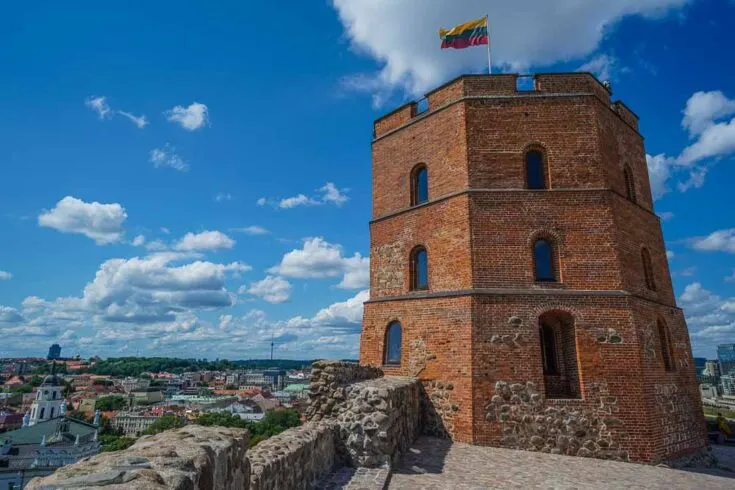
It is located on the same grounds as the Palace of the Grand Duke, so it can easily be viewed on the same day. Once you reach the top, you will be able to enjoy some of the best views of the city.
If you aren’t a fan of walking up hills, don’t worry, there is a functioning train that can take you up/down.
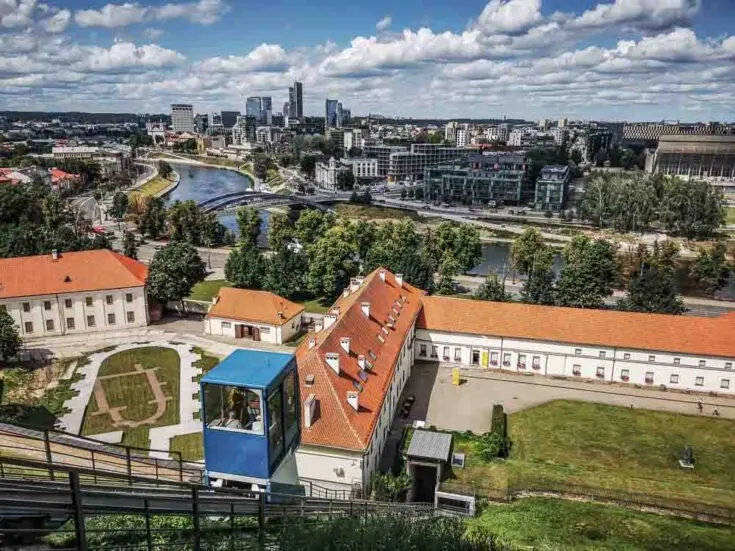
Inside the tower, you will find a small museum showcasing the history of the surrounding area. Archaeological findings are displayed as well as the different designs of Vilnius castles that were prevalent throughout the 14th to 17th centuries.
Few places to visit in Lithuania offer such an in-depth glimpse into the country’s past.
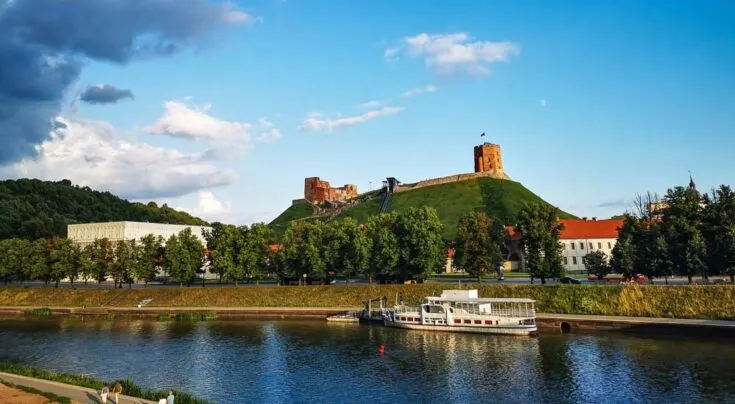
25. Hangout at the notorious Lukiškės Prison
Once one of the most notorious prisons under the Soviets, now the new cultural hub in Vilnius with art gallery, concerts, and a bar.
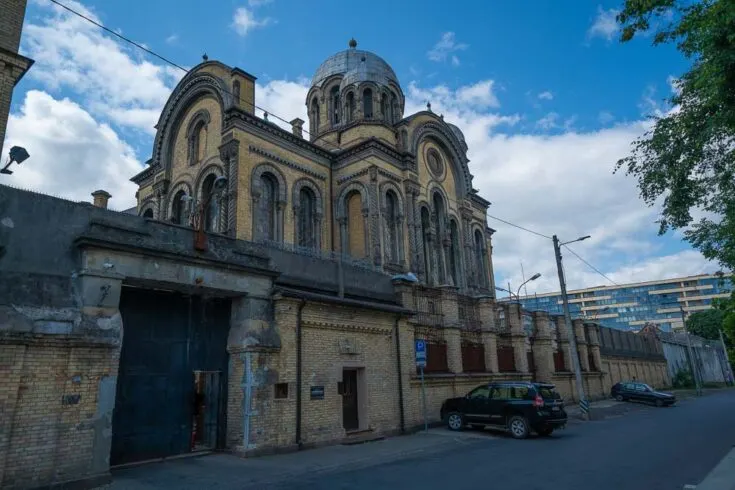
Once the most notorious prison in Lithuania until the prison was officially closed on 2 July 2019.
The prison opened up in 1904 when Lithuania was part of the Russian Empire.
It was also used by the Germani Nazi s occupation of Lithuania during WW2 when it was used by the Gestapo as a holding cell for thousands of Jews.
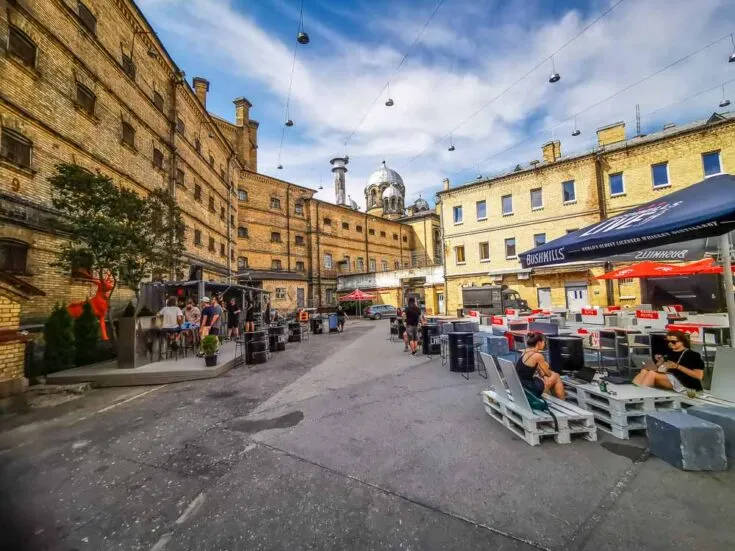
Now the prison has reopened under the name Lukiškės Prison 2.0, which these days offers everything from art studios which is used by around 250 famous local artists.
You can also tour the old prison with some of the old prison guards working as guides in prison now, (you will hear some crazy stories from their own experience working in the prison during the time it was a notorious prison,
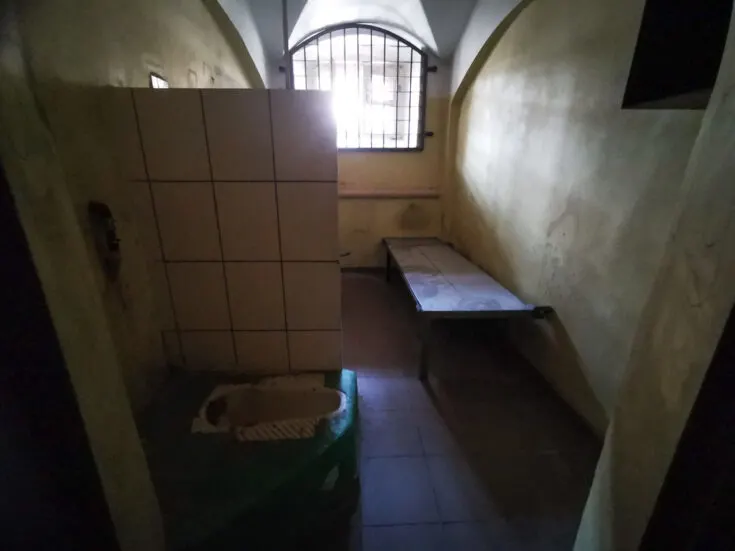
Visit Lithuania Tourist Attractions
Lithuania is truly an unconventional European holiday destination. The curious combination of Balkan culture and modern European architecture is one of its major selling points.
Learn about the Soviet occupation of the country, sample some of the local’s sensational craft beer, or just spend your day relaxing on white sandy beaches.
There are so many fun things to see in Lithuania that you will want to visit again and again.
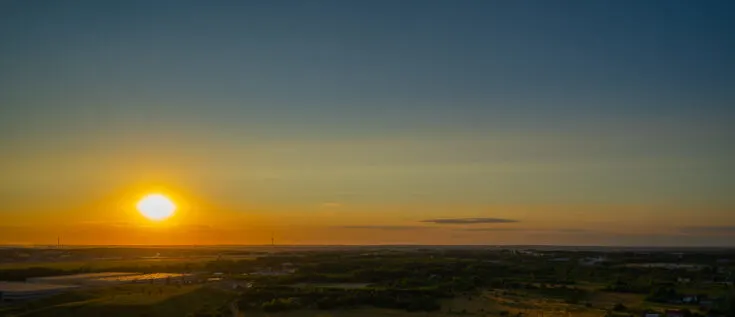
Now that you know exactly what to do in Lithuania, I hope you enjoy your time here as much as I did.
If you find any other great things to do in Lithuania that I haven’t mentioned, please let me know in the comments section below.
